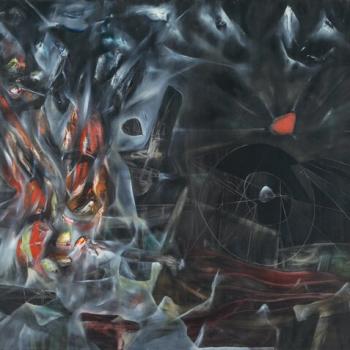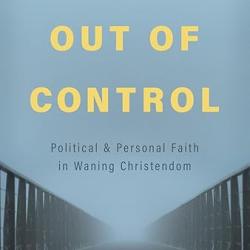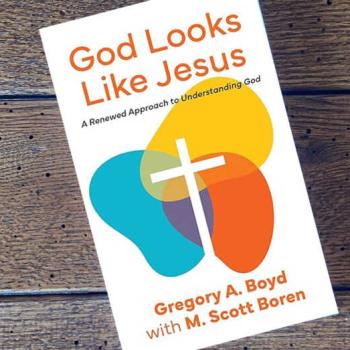What Is “Integration of Faith and Learning?” Follow Up (Part 3) to Series on “The Christian Worldview”
In a way, the two part series “Is There a ‘The Christian Worldview’?” is simply a preamble to this post/essay. At least in Christian higher education circles, one of the main functions of developing a “the Christian worldview” has been to use it as a tool for encouraging, sometimes requiring, “integration of faith and learning.” A main reason for the existence of Christian institutions of higher learning (especially post-secondary) has been to inculcate the basic Christian life and worldview in students—beyond just the usual required religion/theology courses. This project and ideal goes back at least to The Idea of a Christian University by English theologian John Henry Newman. During the middle part of the 20th century Christian colleges and universities that wanted to avoid becoming little more than “church related” institutions began networking with each other. As more of them became less denominational and more trans-confessional (many of them are not affiliated with any particular denomination or confessional tradition) they looked around to see what tools could enhance their determination to be distinctively Christian without being centers of indoctrination.
Organizations such as the Christian College Coalition (now the Council for Christian Colleges and Universities) and the Christian College Consortium came into being partly to strengthen and enhance this goal. The journal Christian Scholar’s Review grew out of the Gordon Review as a periodical dedicated to the exploration of faith-learning integration across the disciplines taught in the fifty (give or take) Christian liberal arts colleges and universities supporting it. Especially Christian philosophers such as Arthur Holmes of Wheaton College began promoting the idea of a basic Christian worldview as a non-denominational Christian metaphysical perspective to use in integration of faith and learning across the disciplines.
During the 1950s and early 1960s several evangelical Christian educators, evangelists and leaders (including Carl F. H. Henry) began dreaming of an evangelical research university—a multi-disciplinary university of arts and sciences similar to Fuller Seminary (non-denominational, evangelical, scholarly and culturally engaged). The specific dream was never fulfilled in reality, but several evangelical institutions of higher learning picked up the dream and attempted to evolve into such. I would identify Biola University as such an institution. At times Baylor University has been led by people with that dream for it.
I was not there at the beginning of this evangelical dream. But early in my teaching career I became involved in the project of faith-learning integration and read many books about it, attended conferences about it, and participated in symposia about it. During my two years on the faculty of Oral Roberts University I taught in the undergraduate theology department and worked with several faculty members across the university to attempt to decide what “integration of faith and learning” meant for us as an evolving non-denominational, evangelical, Christian university of the arts and sciences. The provost of the university and dean of the School of Arts and Sciences strongly supported us and encouraged us to work on this. We held at least two public discussions of what integration of faith and learning means—with panels of presenters and responders and audiences of faculty, students and administrators.
Then, during my fifteen years on the faculty of Bethel College (now Bethel University), I became deeply involved in the same project there. The college’s administration was more than merely supportive of it; they wanted it defined and implemented. They required candidates for tenure and promotion to write essays describing how they integrated Christian faith (defined for this purpose as the Christian worldview) with their teaching and research. Numerous convocation speakers paraded through the campus to educate us about faith-learning integration. There were workshops about it for faculty. Faculty retreats were devoted to it (with required books to read in advance). This was not just true at Bethel; all the institutions of the CCC and CCCU were involved in the same concern and project. Eventually I became editor of the Christian Scholar’s Review and made decisions about submitted manuscripts and editorial direction and mission (together with the publisher and managing editor and editorial board). Our whole mission was to explore faith-learning integration in a scholarly manner and to publish example of it.
As I progressed through my now thirty-two year journey of teaching in three different Christian universities that intended to be more than merely “church related” institutions I discovered very different attitudes toward and understandings of faith-learning integration. Some faculty were (and are) openly hostile to the whole idea. Sometimes that is based on a misunderstanding of it; sometimes it is based on a clear understanding of it combined with resistance to—usually out of fear that it will lead to a magisterial doctrinal control of their research and teaching.
A little more about the reason for faith-learning integration might be helpful here. And I’m going to switch to first person for a while, using “I” and “we” to refer to people promoting the project.
What we discovered is that one of the reasons for the frequent tendency of Christian colleges and universities to devolve from being explicitly Christian to being only “church related” (if even that) was the reduction of the “Christian” adjective to 1) merely having a relationship with a denomination or church, and/or 2) holding chapel, having a campus pastor, and faculty opening classes (sometimes) with prayer and devotions. Added to that was a tendency for faculty, while claiming to be Christian, actively destroying students’ basic Christian faith not only by attempting to drag them out of folk religion into the light of evidence and reason and examined faith, but by also secularizing them. By that I mean some faculty at self-identified Christian institutions of higher learning (throughout the eighteenth and nineteenth and twentieth centuries—since the Enlightenment and scientific revolutions) taught their disciplines to students in a manner that inevitably and inexorably conflicted with basic Christian beliefs about reality.
Then and now (to a certain extent) it was/is not uncommon to discover scholars at self-identified Christian institutions of higher learning following a kind of “two truths” policy. They taught/teach one thing in the classroom and laboratory while claiming to believe its opposite at home and in church. The project of faith-learning integration, then, came about as an attempt to avoid this “two truths” approach to the disciplines being taught in Christian institutions. The project begins with the assumption that Abraham Kuyper was right when he declared that there is no square inch of reality over which Christ is not Lord. Put another way, “If Christ is Lord at all, he is Lord of all.”
But there’s another problematic approach to Christian higher education faith-learning integrators wish to avoid. That is the fundamentalist, “Bible college” approach to education that is based on totalizing indoctrination. I attended such a college where faculty (at least occasionally, depending on who was president) were not allowed to use textbooks by non-evangelical authors in any class. The Bible, interpreted by the denomination’s leaders and by whoever was president of the college at the time, was supposed to be the main textbook in every course. There was no academic freedom or openness to revision of traditional fundamentalist interpretations based on even the material facts of science. One adjunct professor, a graduate of the college who went on to get a master’s degree in psychology and served as a chaplain at a local hospital, was fired for teaching behavior modification as a useful tool in therapy in his class. (I knew him well and knew he was not teaching B. F. Skinner’s whole secular theory. At that college, however, even to mention someone like Skinner in a positive way was anathema.)
The movers and shakers of the faith-learning integration project wanted to avoid two opposite dangers in evangelical Christian higher education: fundamentalist, anti-culture, anti-intellectual, head-in-the-sand “know nothing” indoctrination, and relativistic, secular, naturalistic openness to anything and everything that comes down the pike in state universities and secular professional societies.
We wanted (and still want) Christian higher education to be distinctively Christian in a sense more than simply having a relationship with churches and holding chapel and encouraging faculty to open classes occasionally with devotions or prayer. We wanted (and still want) Christian higher education to value the life of the mind, to recognize that “all truth is God’s truth whatever its source may be,” and to be culturally engaged and not anti-intellectual.
So here a question naturally arises: Why not insist that faculty in authentically Christian institutions of higher education (more than merely church-related) integrate the whole of the institution’s belief system with their disciplines? For example, why use “the Christian worldview” as the foundation and critical principle rather than, say, simply “Jesus is Lord” and “God is triune” and “the cross is the means by which God reconciled to world to himself?” The answer is, simply, that doesn’t work. How does one integrate the Trinity, for example, with, say, anthropology or drama or music or literature or…whatever? How to do it might be interesting, but it’s not something that can be required. And, theoretically, it could be done while still teaching following a metaphysic that is distinctly non-Christian (e.g., “New Age” or naturalistic, etc.).
We faith-learning integrators chose “the Christian worldview” for faith-learning integration because it is not denominationally or confessionally specific (and therefore useable in a non-denominational setting) and it is a very broad vision of the nature of reality that is, at least in theory, integratable with every discipline. To be very specific, it would be absurd for a college or university administrator to approach a faculty scholar-teacher and ask whether her teaching of her discipline is compatible with the Trinity. But it is not absurd to approach a faculty scholar-teacher and ask whether his teaching of his discipline is compatible with belief that God is the personal creator of the cosmos who is involved and cares in the affairs of the world. Now, the latter question, like the former, will inevitably rule out some approaches to research and teaching in some disciplines. But that’s the whole point. A teacher-scholar in an authentically Christian institution of higher learning should never be teaching as true a theory that absolutely, necessarily conflicts with basic Christian metaphysics and he or she should at least strive to teach as true only ideas compatible with basic Christian metaphysics.
Now, some scholar-teachers at some Christian institutions have raised a very good question: How to integrate the Christian worldview (as I have described it in the second installment of the series) with, say, mathematics or physics? First, as Emil Brunner helpfully pointed out in Man in Revolt (a book on Christian anthropology) there are layers and levels of intellectual life, scholarship and research, in terms of their points of contact with revelation. The anthropological sciences, for example, are much closer to Christian metaphysics, in terms of possibilities of integration, than, say, mathematics. The question for a mathematician in a Christian institution should not be “Are you teaching ‘Christian mathematics’?” (which is absurd), but “Are you teaching theories about mathematics that conflict with the Christian worldview?” The answer to the first question can only be “no.” The answer to the second question, upon careful examination, might be “yes.” For example, a mathematician might (I’m not saying any do!) extrapolate from mathematics to a pagan worldview such as that of the ancient school of esoteric philosophy associated with Pythagoras. And she might make statements (which I have heard made) such as “Mathematics rules everything!” Without qualification, that statement falls into conflict with Christian metaphysics.
So what is authentic Christian “faith-learning integration?” Two answers must be given. First, it is the avoidance of theories (considered and taught as true) that absolutely, fundamentally conflict with the Christian worldview. Second, it is the project of bringing together in mutual conversation and informing of the Christian worldview and the material facts of the disciplines. It is not, in other words, a one-way street with the Christian worldview dictating to the disciplines. The disciplines (arts and sciences) can and should also affect how the Christian worldview is interpreted and expounded.
Finally, I’ll give a few examples. If a Christian professor in a Christian institution of higher learning declares to her students as truth that “human beings are nothing more or other than digestive systems that know they will die” (E. O. Wilson) she is stepping away from anything recognizable as the Christian worldview and should be corrected—even if she is at home and in church a paragon of Christian belief and virtue. That’s a pretty obvious example. More subtle and difficult is a case in which a Christian professor tells students that in an education class “If your students have not learned, you have not taught.” Such a professor should be asked for some clarification of that in light of the Christian worldview principle that people are fallen, corrupted, and therefore capable of turning a deaf ear to truth.
A particularly controversial target would be the claim that “Art is for art’s sake” (without qualification. According to the Christian worldview nothing, outside of God, is for its own sake. The purpose of everything is to glorify and serve God. Now some art professors misinterpret that as meaning that they and their students may only create works of religious art. That’s not true. All kinds of art can glorify and serve God. Creativity itself can glorify and serve God. But some art does not. A painting of a crucifix submerged in urine, being urinated on, does not glorify or serve God. Its intent is clear. Even in art, if it is compatible with anything and everything it has little or no meaning or purpose. And most modern art is meant to make some kind of political statement (very broadly defined).
Moving to the second answer to the question of what is Christian integration of faith and learning: If a Christian professor in a Christian institution of higher learning discovers a material fact that requires the alteration of a principle of the Christian worldview, the Christian worldview needs to change. The Christian worldview must not be impervious to materials facts of reality. However, as I stated it, the Christian worldview would not seem to be likely to be falsifiable. It is a “blik” (R. M. Hare) and real bliks are not falsifiable. They are perspectives that themselves dictate what counts as evidence.
More realistically, a Christian professor in a Christian institution of higher education, while not being a philosopher or theologian, should be familiar enough with the Christian worldview to look for points of integration and bring them out to students in class studies. If there really are evidences of intelligent design (I am NOT using that phrase in association with any organization!) in nature, a Christian professor should use them to support (not prove) students’ belief in God as creator. A classic example of this is Reinhold Niebuhr’s Gifford Lectures The Nature and Destiny of Man. There he uses history and human existence to demonstrate that the Christian perspective is more reasonable overall than its main Western competitors—naturalism and idealism.
Three are two main principles driving faith-learning integration (as it really is and not as some people distort it): 1) All truth is God’s truth, and 2) Something that is compatible with anything and everything is nothing. Fundamentalists (sometimes disguised as “conservative evangelicals”) tend to deny the first. For them, all truth is in the Bible—as interpreted by some founding evangelist or gathering of ministers or special Christian guru. “Truth” discovered outside of a biblical context is automatically not true. Of course, nobody really believes that, but that is the idea one gets in some fundamentalist circles. This appears especially when the material facts of science are rejected as untrue because they conflict with some traditional interpretation of the Bible. Truth faith-learning integrationists recognize all truth as God’s truth whatever its source may be. Anything that is compatible with anything and everything is nothing works against all kinds of relativism. True relativism (not relativity) is corrosive of everything—even itself. Christianity has shape; it has cognitive content. It is not just “warm fuzzy feelings” about Jesus (as good as those may be). It contains a worldview that is alternative to other metaphysical visions of reality such as monism, idealism (dialectical or absolute), naturalism, etc.
Parents and pastors have a right to worry about their young people going off to college or university. Even in public high schools there is often a secularizing influence in the way things are taught. Parents and pastors have a right to believe and trust that when their young people go off to a Christian college or university they will not be secularized—pressure put on them to abandon the basic Christian worldview and adopt alternative metaphysical visions of reality. Faith-learning integration is all about providing an intellectually rigorous environment where Christian students (and others who may come) are not indoctrinated into anti-Christian metaphysics but shown how all truth is God’s truth.












